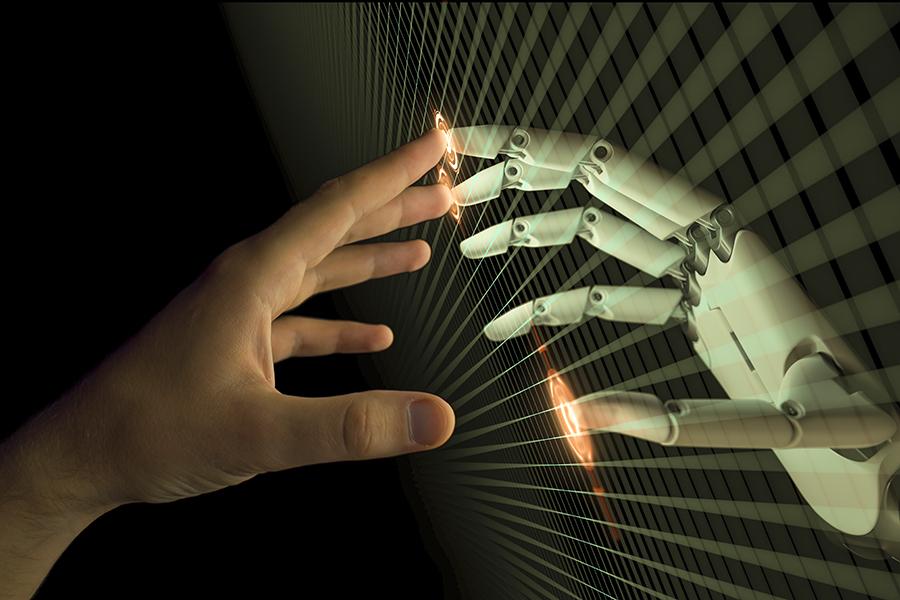Human-led, tech-powered: The formula for successful business transformation
To make organisational change sustainable, we have to see human intelligence and technology not as two distinct concepts, but as interlinked aspects that feed into each other to create maximum value
“The world as we have created it is a process of our thinking. It cannot be changed without changing our thinking.” ― Albert Einstein
From the invention of the wheel to the advent of virtual reality, the evolution of our society has been predicated on the power of human ingenuity, curiosity and imagination. For thousands of years, people have been thinking of ways and means to keep themselves safe, simplify and improvise traditional ways of doing things, to drive efficiency and evolve. Today, as our post-pandemic society is confronted with a number of challenges, including wealth disparities, lack of social consciousness, climate change, imbalances in the global economy due to increasing localisation, and declining trust between people and the entire ecosystem, we are on the cusp of change.
However, compared to the past, while the need for change is heightened in our present fractured world, that for balance and sustainable growth is more pronounced and better understood. This is the time for human ingenuity to create meaningful change in society and, by extension, in businesses.
When we talk about organisational change, there are a few fundamental questions to consider: Why is change needed? What will drive change? Who will this change impact? At the core of the responses to all these questions lie people and technology. To make this change sustainable, we have to see human intelligence and technology not as two distinct concepts, but as interlinked aspects that feed into each other to create maximum value. It is about the human mind driving technological advancement as much as it is about technology addressing human necessity—transformation for tomorrow is both human-led and tech-powered.
As business leaders embrace this game-changing opportunity, they will have to consider where they are, where they aspire to be and how they will bridge the gap— that is, how they can augment the power of people combined with digital solutions to drive change at both speed and scale.
Think ‘purpose’: Nurturing the right culture and inculcating a sense of purpose within an organisation is of utmost importance—this includes encouraging a digital mindset. Organisations are looking to make up for lost time, they are looking to create a cohort of futurists enabled with technological tools to drive productivity and efficiency internally and simultaneously deliver improved results externally. Imbibing shared values and creating a shared vision develops a trust-fuelled environment—this coupled with digital enablement will help organisations leverage the full power of people plus technology.
Think ‘value’: Business leaders are redefining what value means for their organisations. They are looking to create balanced and sustainable growth. An important aspect when pursuing change is to focus on external stakeholders’ evolving demands—this translates into a client-centric approach. This entails reconfiguring operational models, relooking at services or products being offered and considering consolidation opportunities with tech acquisitions at the forefront. This does not imply simply aggregating human enterprise and technology; rather, it means adopting an integrated thought process to create superior experiences and deliver sustained outcomes.
Think ‘innovation’: Leaders of tomorrow need to think differently, to balance stability and dynamism. With new and emerging businesses, unicorns, soonicorns and the startup ecosystem, there is hunger for growth—an entrepreneurial mindset embedded in technology will fuel that aspiration. This extends across business model transformation, process automation, supply chain efficiency, data management, artificial intelligence, cyber security, digital tools, reporting frameworks, among other areas—
technology fuels innovation and underpins everything future-ready organisations do.
Think ‘skill’: While external stakeholders’ needs address the question of why change is needed, internal stakeholders address how change is achieved—placing people at the heart of any successful transformation. Digital tools are created by people for people—
which means technology is as powerful as the people using it. This calls for organisations to embrace new, emerging and diverse skill requirements to fully leverage technological capabilities. Preparing for progress starts with preparing people, and capability expansion, knowledge enhancement and extensive upskilling are critical for success.
If we look at transformation objectively, the human element addresses five Ws. Why? To build resilience and relevance. What? Improved ways of doing things. Who? The entire ecosystem stands to benefit. When? Now. Where? Across every operational aspect in any business. And technology addresses the how—enabling organisations to evolve and adapt at speed and scale. The true power of transformation lies in connecting talent and technology to develop hybrid capabilities—a unique combination of human intelligence and technological tools that creates a community of solvers to drive change that is both human-led and tech-powered.
The author is Chairman of PwC India.
The thoughts and opinions shared here are of the author.
Check out our end of season subscription discounts with a Moneycontrol pro subscription absolutely free. Use code EOSO2021. Click here for details.

